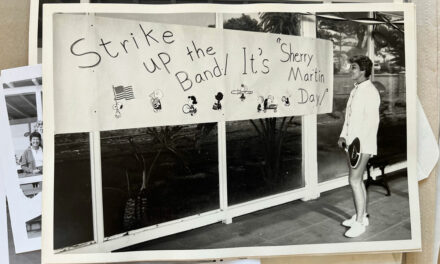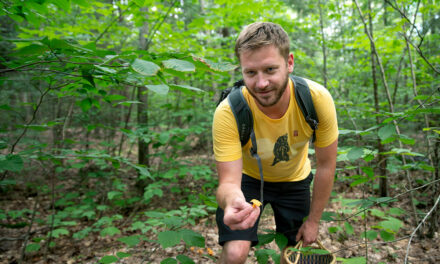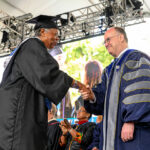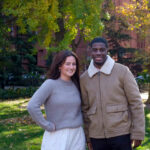
Catching Up with Young Alumni
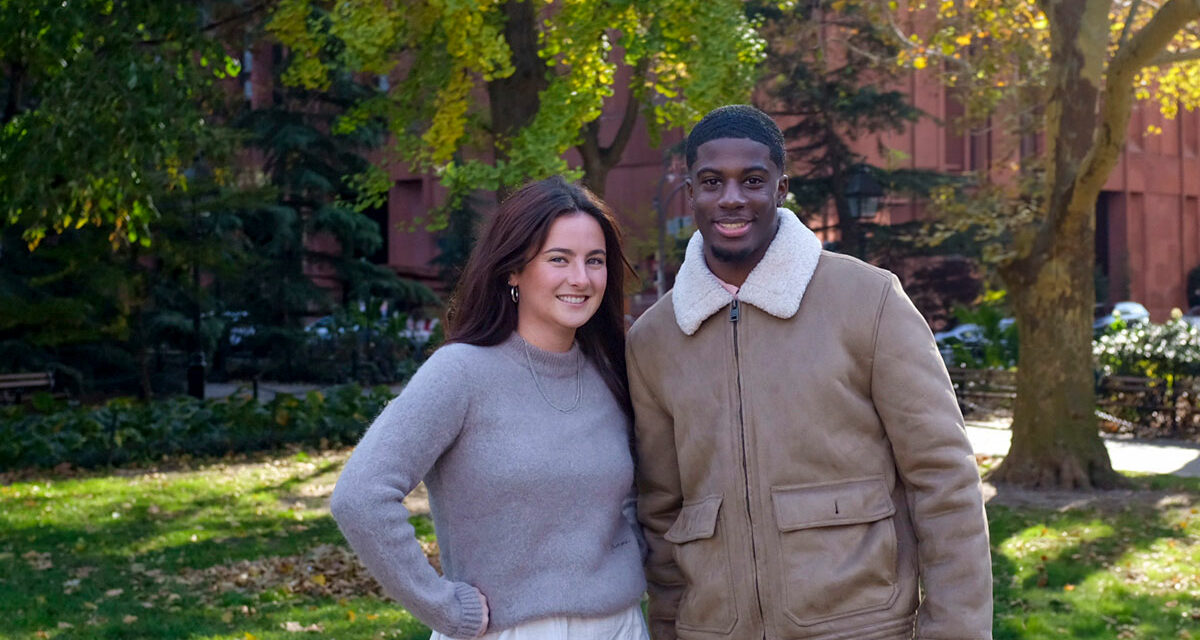
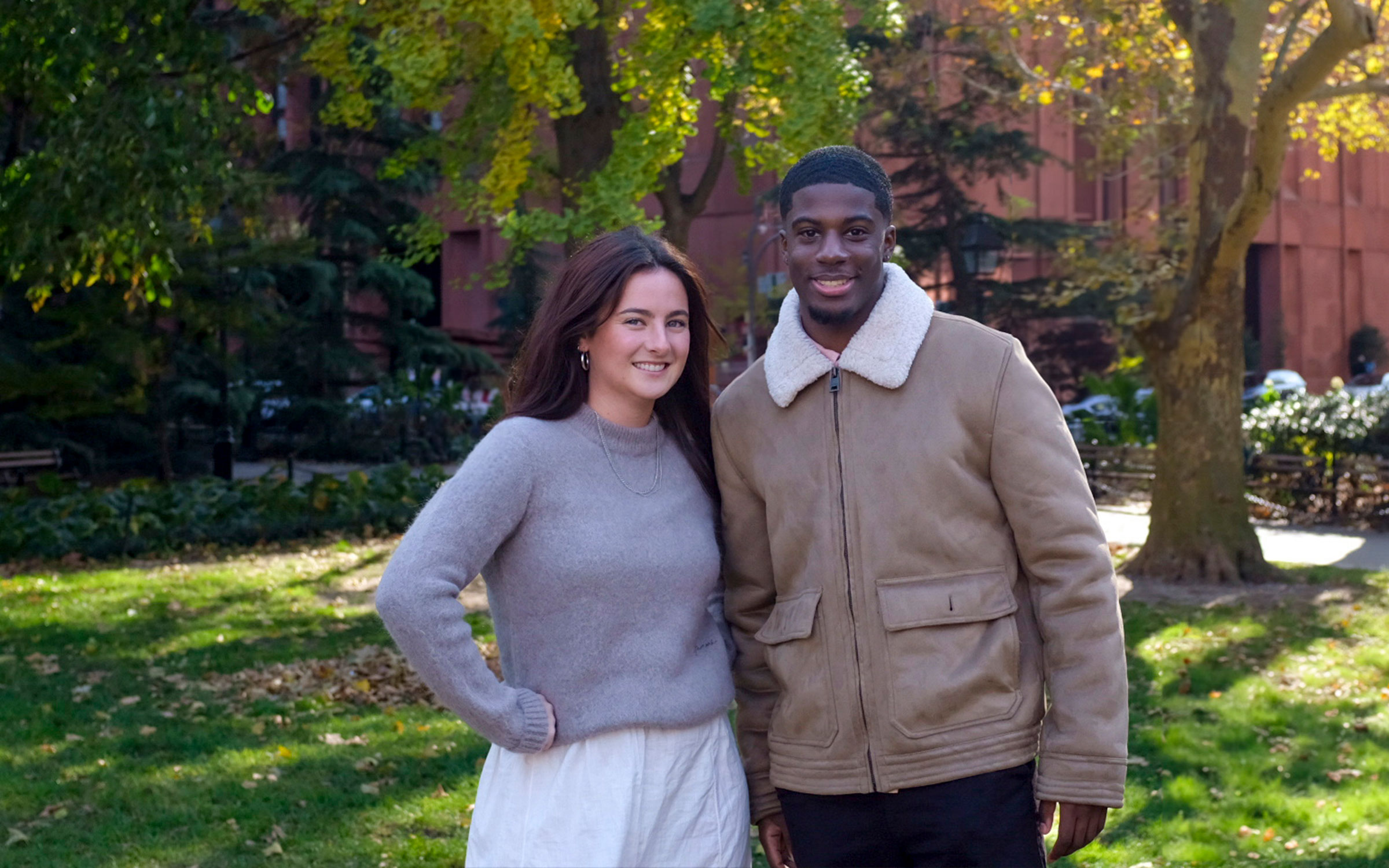
New York University grads, Maura Durkin ’18 and Ephraim Reed ’19, are still living in the city that never sleeps. Maura and Ephraim each recently shared their journeys from college to career.
A Tastemaker
Maura Durkin ’18 is on a Path to Save the Planet
BY JENNIFER HALSTEAD
Every fall and spring, high-end fashion designers debut new lines of clothing. What appears on those runways becomes the inspiration for that season’s trends, and retailers—and customers—take note. At least, that’s how it used to be.
Now, fashion trends sprout up more organically—for example, on the feet of fellow New Yorkers, says Maura Durkin ’18, laughing. “Certain individuals in Manhattan decide to wear clogs, and all of a sudden, you see clogs everywhere.”
Maura is a tastemaker in her own right. As a merchandising strategist at Doneger Tobe, Maura helps clothing manufacturers, and the retailers who sell that clothing, make decisions about exactly what clothing ends up on their racks. You may think these decisions would be simple, just look at what’s trending and make clothing that reflects those trends. But the process is actually much more complex. Strategists, like Maura, have to have their fingers on the pulse of not only what’s “in” now, but what will be trendy in the months and years ahead. And they’re not just suggesting the hottest new colors or fabrics—they’re thinking about minute details like thread color, button placement, and exactly how a collar should lay on a sweater.
“It gets very nitty gritty,” Maura says, referring to the tiny details she helps both merchandisers and retailers figure out. Maura’s roster of retailers includes some of the world’s biggest retailers, as well as smaller family-owned shops. “A retailer will come to us and say, okay, we really want to understand the Gen Z customer. What are they doing? What are they participating in and how does that translate to what they’re wearing?” she explains.
She also helps manufacturers—who make the clothing to sell to those retailers—design collections that will appeal to their clients. “We will tell the retailers, here are the top five things to buy for your junior customer,” she explains. “And we also work with manufacturers, helping them design their collections that are then bought by the retailers we work with. So it’s a very holistic job.”
The end result is a win-win for both the manufacturers who make clothing that’s in demand, and the retailers who sell it. But unless sustainability is top of mind for these manufacturers and retailers, there’s one player that could ultimately end up being the loser—the planet.
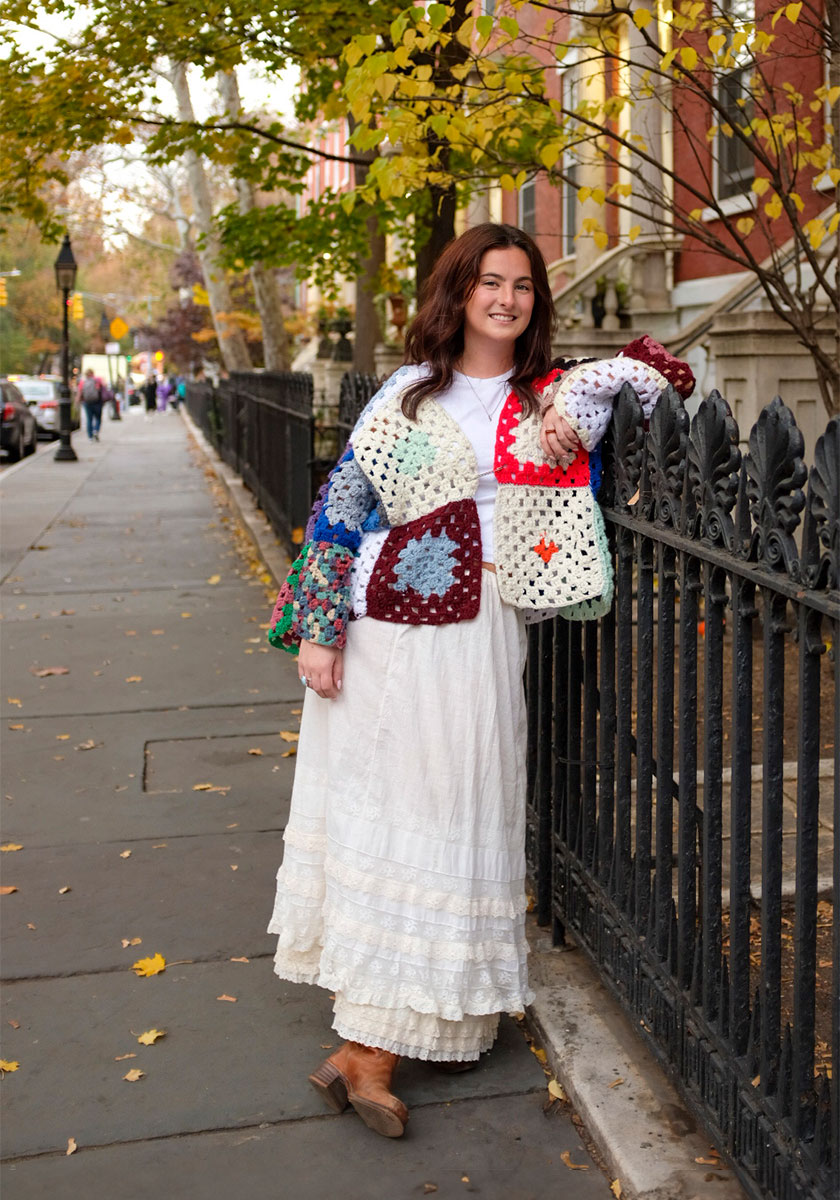
The fashion industry produces 10 percent of all greenhouse gasses, more than aircraft emissions and shipping emissions combined. An industry that’s lauded for beauty and class has a dirty little secret, and Maura is determined to change that.
Like a well-sourced outfit, each piece of Maura’s past comes together in service of that goal. From her Middle School days as a science-loving photographer, to a life-changing trip to the Great Barrier Reef, to a career-affirming semester in Italy, to a stint in sustainable footwear—each layer of her experience drives Maura closer and closer to a world in which the fashion industry benefits the earth, rather than destroying it.
“It changed my life”
In her Middle School years, two threads that would have an immense impact on Maura’s life began to take shape. First, she began snapping photos of friends and family members, and a burgeoning photography business was born. Later, at the Upper School, she would take senior portraits for classmates and serve as a yearbook editor, which she says scratched a creative itch.
And second, she found herself recognizing her own potential in her science classes with Kelley Gorman and Robert Davis. It was the first time she realized her own potential in the field, and she credits both her teachers and the fact that Middle School science and math classes at SSSAS are separated by gender. “Growing up, there’s sort of this narrative that girls are meant for English and sort of the softer sides of academics, whereas science and math were for boys and were male-dominated,” she says. But it was in her all-female science classes where she discovered for the first time how much she truly loved the subject. “It changed my life, because I was able to see myself as someone who could be interested in science,” she says, “especially given that Ms. Gorman was still a practicing scientist.” She also remembers Mr. Davis with fondness and gratitude. She says he believed in her in a way no other teacher had before. “He told my mom he thought I could be the next Marie Curie. And my mom still quotes that,” she says, smiling.
The summer before her junior year, Maura was able to merge her interests in photography and science in a way that would radically transform her outlook on life. She spent a month in Australia with National Geographic, taking photographs of the country’s abundant natural beauty. “The landscape of Australia is pretty crazy and sort of does the work for you,” she says, laughing. But it was a trip to the Great Barrier Reef that changed everything. There, among the dead and dying coral, she saw firsthand the impact of the climate crisis and understood it in a way she previously had not. Maura says the severity of the damage shocked her. As soon as she returned to school, she told her college counselor about a change of plans. She still wanted to go to school for photography, but wanted to study environmental science as well. “I felt that if I was going to be a photographer, I wanted it to mean something,” she says. “I wanted to be able to tell stories of things that people weren’t learning about otherwise.”
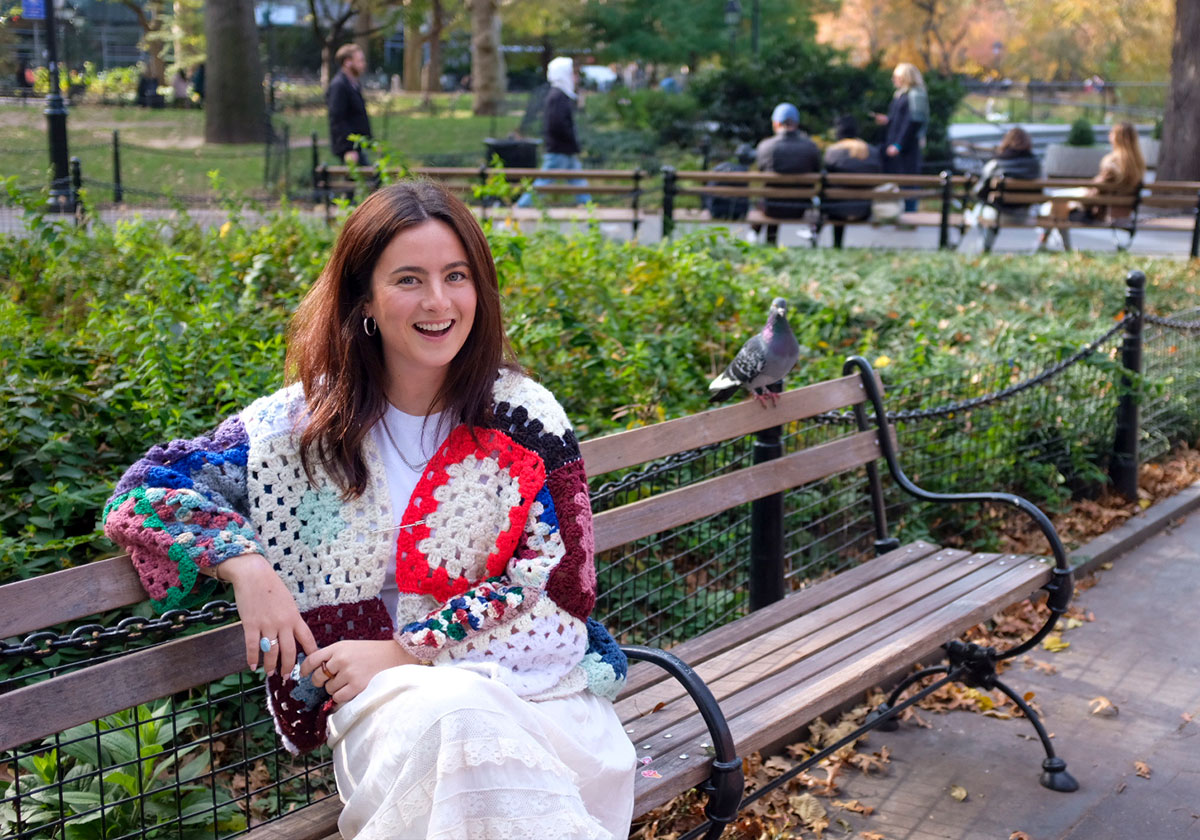
Exposing Italy’s dirty fashion secret
Maura applied to a few photography-specific schools, but still had an environmental science major top of mind. She was eventually drawn to New York University because, while it was large enough to operate as a major research university, it offered a liberal arts program called Global Liberal Studies, which Maura thought might be perfect for her. “Class sizes were small, consistent with what I had been used to at SSSAS,” she says. “And I still had the opportunity for research.”
Ask Maura what her passions are, and “research” will undoubtedly be on the list. “It’s something I’ve enjoyed my entire life,” she says, a craft she first honed at St. Stephen’s and St. Agnes. The idea of guiding her own research compelled her, and ultimately led her to choose NYU.
The approximately 100 students per grade in NYU’s Global Liberal Studies program graduate with an interdisciplinary bachelor of arts, but are able to declare concentrations within that broader major. Maura loaded her schedule with anthropology, environmental science, and global public health classes. And it was in one of those classes that she learned just how much of a negative impact the fashion industry has on the environment. “One quick stat is that one pair of jeans requires around one thousand gallons of water to make,” she says. She also learned about factory emissions that impact the air and waterways around factories. “A lot of our clothes are obviously dyed, and that dye waste gets put into waterways,” she says. “Bangladesh, especially, has rivers that have turned purple.” The class not only opened her eyes to the downsides of a space she’d always loved—fashion—but also empowered her to want to do something about it.
To graduate from NYU’s Global Liberal Studies program, students are required to spend a year abroad at one of the school’s study sites. Maura had planned to spend her entire junior year in Spain, but COVID-19 changed those plans quickly. Instead, armed with a growing interest in fashion and sustainability, she traveled to Florence, Italy, for the first semester of her senior year.
Florence is a hotspot for luxury fashion—it’s home to Gucci headquarters, after all. But while studying there, Maura discovered an unpleasant truth behind Italy’s status as a fashion destination. Just thirty minutes outside of Florence, a city called Prato has had a long and complicated role in the industry. In the 1980s, Prato, which previously had been home to several wool factories, saw an influx of Chinese migrants. These migrants came from a small province which had already seen success in apparel manufacturing in China, and were wooed by the potential of Prato’s empty factories and the fact that it was in the shadow of a luxury fashion capital. Soon, wool was out—and cheap textiles imported from China were in. Chinese migrants spurred the growth of what the Italians call pronto moda, or fast fashion, in Prato. Today, the city is home to the largest concentration of Chinese people in all of Europe.
Maura says learning about Prato’s contribution to the industry was shocking. Importing fabric from China and turning it into clothing in Italy meant that apparel could legally carry a “made in Italy” label, which gave it the high-end status associated with Italian goods. But the reality was bleaker—working conditions in many of Prato’s factories were unacceptable, and many of the workers were undocumented and unable to leave factory work without the risk of deportation. Because the pronto moda brought a lot of money into the city, labor rules were often not enforced or ignored. But people outside of Prato weren’t necessarily in the know about what was happening there.
“We hear about the tragic Rana Plaza factory collapse in Bangladesh in 2012 that killed thousands of people,” Maura says. “But within Prato, there’s not so much media attention because of these legal and cultural implications.”
That a thriving textile economy was built on cheap labor, unsafe working conditions, and unstable citizenship status was something Maura couldn’t ignore. “It’s very cheap clothing,” she says. “But the human cost is undeniably awful.”
She decided to explore that cost in her senior thesis, “Made in Italy by China: Human Impacts of Globalization on Modern Garment Production in Prato.” Her paper detailed Prato’s clothing manufacturing system and the vast impact that it had on human health and safety. She argued that the path to an equitable fashion system requires a societal and cultural re-evaluation of how and why we buy the clothes we do.
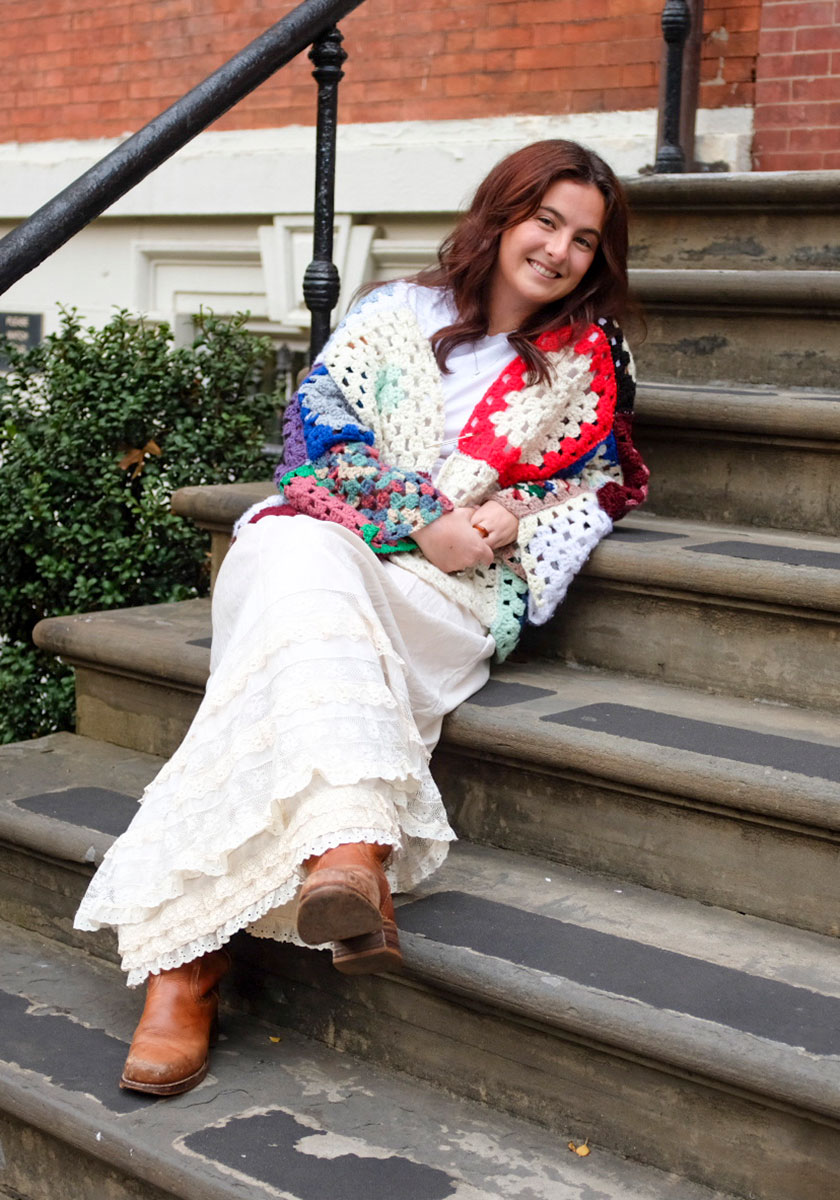
Maura’s thesis turned heads at NYU. Not only was it named the best in the sustainability, health, and environment concentration, it also won the top prize within the Global Liberal Studies program, the Overall Best Scholarly Thesis. In 2023 NYU published Maura’s work in its Journal of Undergraduate Research in Global Studies, her first—but likely not last—piece of published work.
College Advice for Seniors
Dive deep into whatever you are interested in. College is a unique time in your life where you get complete control over what you spend your time doing, studying, and exploring. Don’t take that for granted! No matter what job you apply for, they want to see passion and interest even if that does not directly align with the positions you are thinking about applying for post-grad.
Advice for Job Hunters
Be open to the opportunities, conversations, and connections that come your way. Even if they do not seem to align with exactly what you were ideating, you never know where a door may lead. Also, you don’t have to have it all figured out right away! Do not let the pressure of comparison steal the excitement of this time in your life.
A sustainable future
Maura graduated from NYU with vast knowledge of the problems in the fashion industry and a goal to find solutions. She landed a job as a sustainability consultant with a small, family-owned footwear business. She was drawn to the founder’s declaration that he wanted to leave the planet better for his grandchildren. “That really spoke to me,” she says, “from a people perspective. How frightening it feels right now, and that all we can do is try to take action in the way we can.” Maura helped the company map their supply chain, source more sustainable materials, and eliminate waste in their factories. While the work was fulfilling, it wasn’t easy. Maura says a growing interest in sustainability means a lot of fashion brands are just “checking a box” when it comes to sustainability, and she found that while she could certainly help one company, the real issue was the entire industry.
Soon, an opportunity arose that wasn’t necessarily focused on sustainability, but would put Maura in the heart of the industry and take her consulting experience to the next level. “I knew I had to really work in the industry, know the industry, to begin to make a real difference,” Maura says. That’s how she ended up at Doneger Tobe. For now, she helps brands iron out details of their products, but Maura hopes she’ll eventually be able to consult not just on designs and colors, but on sustainable practices that brands can implement from the bottom up. “It was exciting to me to think that, looking forward, eventually I would be able to consult brands on how to be more sustainable and ethical,” she says.
Maura has lofty career goals—potentially owning her own consulting company or in some other way marrying fashion and sustainability. She’d like to go back to school, perhaps a graduate program for fashion, sustainability, or business school. And she says in five years, if she’s not still living in Manhattan, you can find her somewhere abroad. “I think there’s so much to learn there, both on an inspiration level, because so many American designers get their inspiration abroad,” she says. “And also on a sustainability level, because many of those countries are really doing it right.” She also hopes to keep publishing work, whether it’s research or more creative writing. Wherever Maura ends up, her deep desire to leave the planet better than she found it will no doubt be driving her ambitions, and she will make a difference.
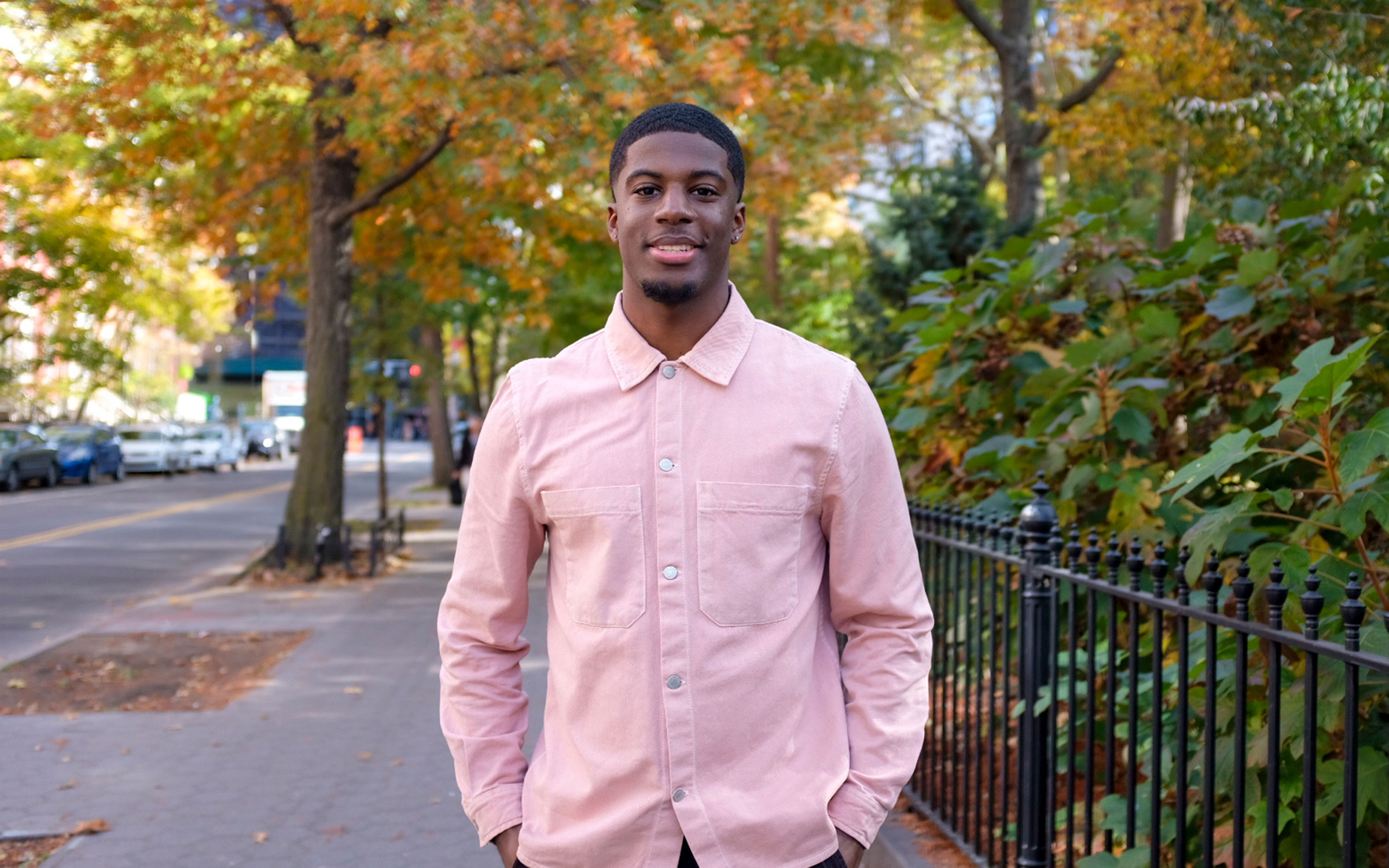
Running Plays
Ephraim Reed ’19
BY JENNIFER HALSTEAD
We’re all used to seeing our favorite professional athletes in ads for products. Think Travis Kelce in spots for Pfizer, Dikembe Motumbo, and his signature catchphrase (“not in my house!”) in a Geico commercial, or Steph Curry in a Subway spot. It may seem like a simple idea—sign a major athlete to endorse your product and reap the benefits. But actually bringing together brands and athletes isn’t so simple. It requires the brainpower of savvy marketing agents, who are able to drum up the best endorsement deals for their clients—deals that benefit both the brands, and the athletes.
Ephraim Reed ’19 is part of that marketing brainpower. As the assistant to Carlos Fleming, partner and head basketball marketing agent at WME, a global talent agency, Ephraim keeps the ball rolling—no pun intended—within the agency. He manages schedules, helps with outreach to brands for potential endorsement deals, and makes sure that clients get paid for their work. Ephraim’s been able to rub shoulders with some of the biggest names in sports—tennis ace Venus Williams and football star Cam Newton, to name two—but he works mostly with professional basketball players. In a journey that brought Ephraim from Virginia to Manhattan, with multiple stops along the way, basketball has been a constant. It’s shaped his social life, his athletic career, and now, his profession.
On a roster of roughly 40 professional basketball players, Ephraim says only seven or eight are “All-Star level names,” who may be recognizable to the most casual sports fans. The rest are either starting out in their professional careers, rising stars, or established but less marketable NBA veterans. While some clients seek national endorsement campaigns, others are looking for smaller, more local deals. Working with those athletes, Ephraim says, is both challenging and rewarding. “You really need to be more creative as far as how to get somebody a deal, that isn’t as visible all the time, or isn’t playing all the time on TV,” he says. “[You have] to be creative, and a kind of storyteller, to find [the right] brands.” He gives an example of Anthony Black, a rookie on the Orlando Magic, who is one of Carlos Fleming’s clients. Black isn’t going to land the same big-name deals as, say, LeBron James…at least not yet. But WME’s job is to help Black connect with brands that value him right now, as a fresh-faced young player with a world of potential. “How would you tell his story to a brand that maybe wants to get into sports, but wants to find a younger athlete, or maybe someone who just isn’t as expensive to work with?” he says. That’s where Ephraim and the marketing agency come in.
Ephraim’s work has opened his eyes to a side of professional sports that often goes unnoticed—until we see the end result of brand partnerships, like commercials. “It’s been really interesting just to see the process behind how these athletes get an endorsement deal,” he says. And it’s also set him on the path to a slightly different, but adjacent, career goal—he’s interested in becoming an on-court agent.
While basketball marketing agents connect athletes with brand deals, on-court agents connect athletes with their respective teams, helping them negotiate the best salaries in leagues like the NBA. “[On-court agents are] focused on evaluating prospects and talent from a basketball perspective,” Ephraim says. “They are typically more skilled at finding who’s the next potential top player.” Up until 2020, WME Sports’ involvement with basketball was strictly related to helping players with marketing and off-court opportunities. In March 2023, it acquired an on-court agency, BDA Sports, to form what is now WME Basketball. Ephraim says the acquisition was great timing. “I came in just a couple of months after that,” he says, laughing. “Having both of those types of services all under one entity has been really cool for me to see. Even though I’m technically in the marketing department, I’m able to interact with our on-court agents, and see both sides of the business and how they cross over and intersect.”
For now, Ephraim is honing his marketing and storytelling chops with an eye toward eventually becoming the guy who helps players sign lucrative contracts with teams.
“Well-rounded”
Ephraim joined the Saints community in fifth grade, and graduated in 2019 with a trail of significant basketball wins and top awards in his wake. Asked to sum up the school in a word or two, he says “well-rounded,” noting the performing arts requirement in Middle School that led to him playing the upright bass from sixth through twelfth grade. “I took academics seriously,” he says. “And I loved basketball, but I always knew I wasn’t going to the NBA either. So I was definitely focused on academics.”
Maybe he wasn’t headed to the NBA, but Ephraim still contributed substantially to the St. Stephen’s and St. Agnes basketball program. Ephraim says for a time basketball wasn’t the standout sport at the school. When Ron Ginyard became head coach in 2012, the basketball team had gone winless in the Interstate Athletic Conference the previous season. Under Ginyard’s leadership the team’s record began to slowly reverse itself, and the team went 5-4 in the conference in the 2015-2016 season. Then Mike Jones III, who played overseas professional basketball himself, took over in 2016, and the program continued to transform. “Both Coach Ginyard and Coach Jones were very competitive,” Ephraim says. “We had 6 a.m. workouts, lifting, things of that nature. They were very serious about building a really competitive program within the area.”
The team reached their peak accomplishment in 2019, Ephraim’s senior year—a state championship title. “I believe it was the first state championship that we’d won since the 90s,” he says. “Just being able to have an impact, be a captain on that team, and have all my friends on the team…it was a really, really great experience.”
Beyond being a standout on the court and excelling in the classroom, Ephraim started developing a love for sports management during his time at the Upper School. In 2017 during his junior year, Ephraim participated in the National Student Leadership Conference on Sports Management. The program exposed Ephraim to the ins and outs of the management industry—how to interact with clients, negotiate contracts, and land endorsement deals. “After participating in that, I realized that this was an industry that I wanted to pursue after high school,” he says.
At Prize Day in 2019, Ephraim won two awards that truly speak to his character. His fellow students elected to award him the Macondray Trophy, the award for Best All Around Student. And he also took home the Emmett H. Hoy, Jr., Citizenship Award, given to the senior who exemplifies the highest ideals of citizenship and service. He feels that SSSAS helped him to manage his time and multiple responsibilities. “I was surrounded by so many talented and exceptional students who motivated me to maintain a level of excellence in each area that I pursued,” Ephraim says. “I was used to being challenged in the classroom and on the court, which made my transition to college much easier. The habits that I built at SSSAS definitely prepared me for what I am doing today. Most importantly, SSSAS created an environment that encouraged learning, integrity, and curiosity.”
Basketball & Business
When it came time to apply to colleges, Ephraim was focused on two things—basketball and business. “I knew I wanted to play basketball in college, and I knew that I wanted to major in sports management,” he says. He looked at a handful of schools, but couldn’t seem to find one that would help him launch a management career and also get him ample playing time on the court. Then, he found New York University. “I was able to form a good relationship with the coaches there,” Ephraim says. “I knew that was the place I wanted to go.”
Like his team at SSSAS, the NYU men’s basketball program improved steadily over time. Ephraim’s years as a point guard for the Violets were mottled by injury—and one canceled season due to COVID-19—but he was still able to make a statement on the court. He spent his senior season helping the Violets to an 18-8 overall record. He was also named an Arthur Ashe Jr. Sports Scholar, an award that honors college students of color who have excelled in the classroom and in athletics.
Looking back, Ephraim says SSSAS aptly prepared him for his life in college. “The encouragement to pursue all these different kinds of interests, I think, definitely prepared me,” he says. “Learning to balance the structure of having six a.m. basketball workouts, classes, and then having to study, definitely prepared me for the college schedule.”
His was a schedule that, beyond his commitments to basketball and his sports management degree, would soon be loaded with internships. A spring 2021 internship at Catalyst Sports & Media thrust him headfirst into the management world, with a roster of clients in the NBA. “It gave me my first experience of what it’s like to work at an agency,” Ephraim says. He researched sponsorship opportunities and pitched clients to brands, and was able to land two endorsement deals for one of Catalyst’s clients, Iman Shumpert.
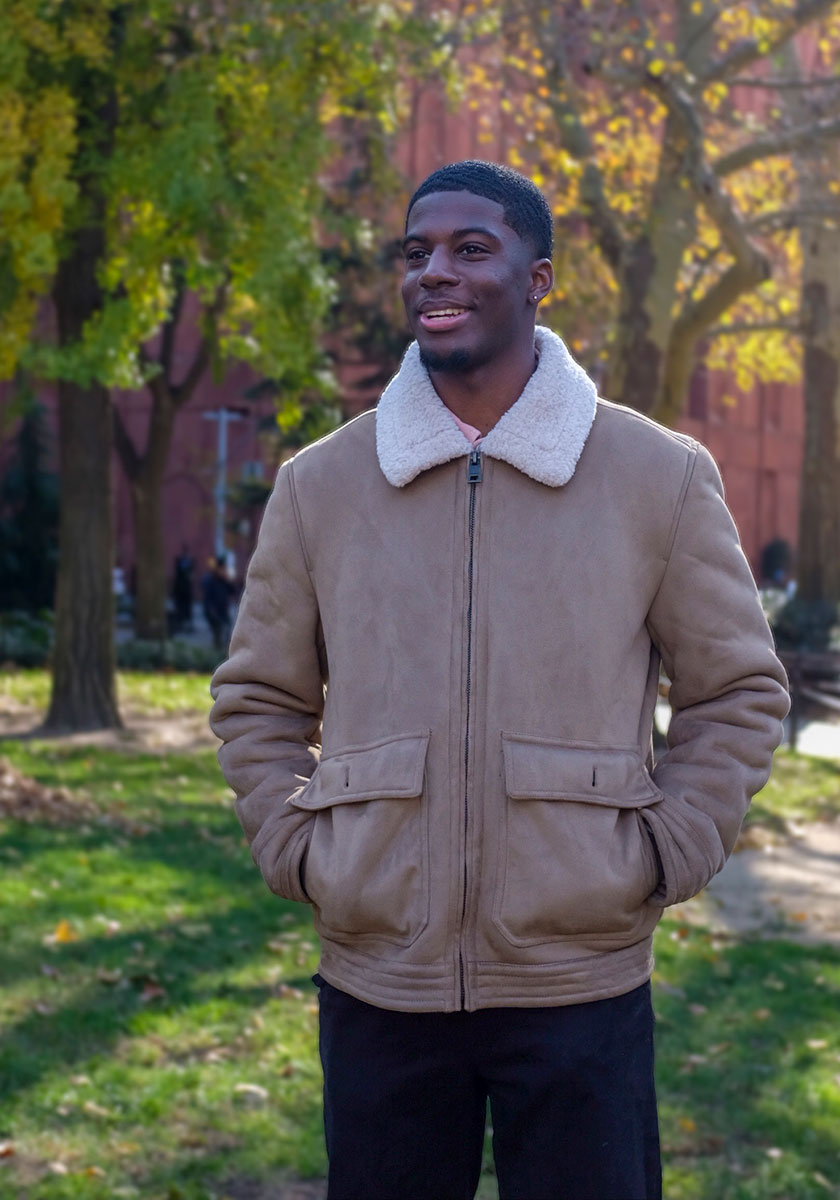
In late 2022, Ephraim secured a second internship—one that helped him hone the storytelling skills that are so necessary for marketing and on-court agents. The Black Fives Foundation is an organization dedicated to telling the history of African-Americans in basketball, before the NBA was founded in the 1940s. “There’s a whole history of basketball before that, that’s not really told,” Ephraim says. “It’s kind of a lost history.” The Black Fives aims to change that through an online museum, curriculum materials, and merch partnerships with big-name brands like Puma. Ephraim went to an event put on by the organization and ended up meeting its founder, Claude Johnson, who offered him a paid marketing internship. Ephraim worked with the Black Fives on an initiative they had with the Big East conference, helping those schools plan out their programming for things like Black History Month.
While working with Black Fives, Ephraim also had a contract with the NBA’s Utah Jazz, where he served as a Web3 project consultant. One of Ephraim’s college teammates, Riley Demps, had graduated a year prior and was working for the Jazz, helping the team explore marketing through Web3, or what some know as the metaverse. Riley brought Ephraim on to help market the technology, which includes a virtual locker room where fans can interact with players. Ephraim’s job was to get Jazz fans excited about the burgeoning technology. All three roles—with the Jazz, the Black Fives, and Catalyst —allowed Ephraim to hone his management, negotiation, and marketing skills, a combination that would eventually land him a job at WME.
An opportune meeting
But not right away. Post-graduation life found Ephraim applying “everywhere” and reaching out to contacts, trying to secure a full-time job in the sports management industry. “One thing about the sports entertainment industry in general, it’s very competitive. A lot of people want to work in these industries,” he says. “I wasn’t getting that much success.” At least, he wasn’t at first. Then, in conversation with a former NYU professor, Ephraim found himself at a panel as part of NYU’s Sports Film Festival. One of the panelists was Carlos Fleming, who had decades of experience at WME and a deep roster of clients like Venus Williams. After the panel, Ephraim approached Fleming, telling him a bit about his own background and asking if they could have a phone call in the near future. “At that point, I didn’t know much about Fleming’s background besides reading his bio,” Ephraim says. “I just wanted to talk with him and learn more about what he does.” When Ephraim emailed Fleming to set up the phone call, Fleming did him one better—forwarding his information to HR and getting him an interview for an open assistant role Fleming had. “I never actually got a phone call with him,” Ephraim says, laughing. He’s humble about what got him there—“just kind of meeting or being at the right place, it worked out.” Of course, it’s more than that—Ephraim’s years in the sports marketing world and prowess on the basketball court couldn’t have hurt, either.
Advice for Job Hunters
It sounds cliché, but you need to build your network out as much as you can and take advantage of existing networks. Think about companies and or careers that interest you, and then find ways to build contacts in these areas. Attend industry events and reach out to people on LinkedIn. Before calls, be sure to do research and be prepared with questions. Remember to follow up after these calls so that people know you are genuinely interested in maintaining a relationship. I believe that creating real conversations and connections are ultimately what is important.
What’s next?
You might say Ephraim is good at making plans—he ran plays as a point guard, for one, and graduated from St. Stephen’s and St. Agnes with a very clear and specific plan for what he wanted to do professionally. And now, as you might expect, Ephraim has big plans for what will happen down the road. Five years from now, he’d like to have completed law school with a J.D. in hand and be working as an on-court agent. “That would be the vision,” he says. “That I have my own clients that I’m representing in the NBA.” One thing is clear—whatever he does in the future, Ephraim’s experience running point will make him great at it.

